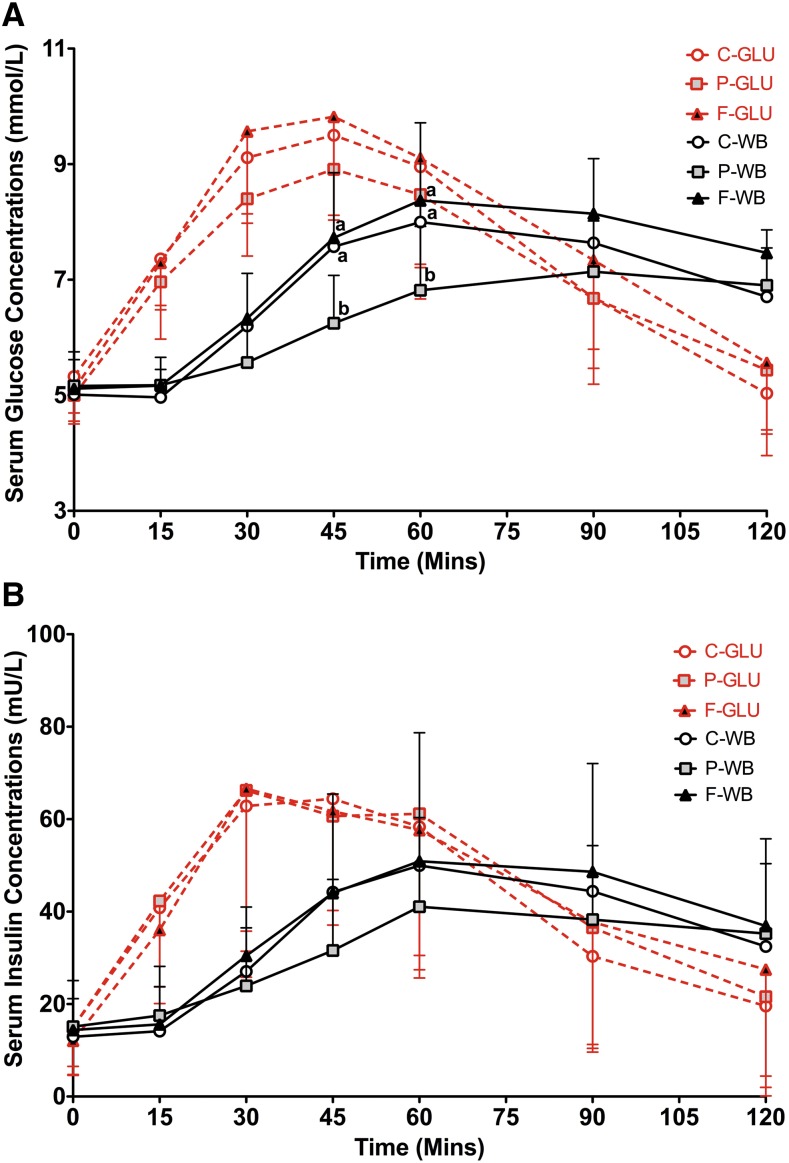FIGURE 1.
Mean ± SD effects of different breakfasts on glycemic and insulin responses to the glucose-drink and white-bread challenges. Serum postprandial glucose (A) and insulin (B) concentrations from the glucose-drink and white-bread challenges that were preceded by breakfasts varying in macronutrient composition are presented. Differences in serum postprandial glucose or insulin concentrations in test breakfasts over a 2-h test period were determined with a 2-factor mixed ANOVA with the main effects of the test breakfast and time and test breakfast × time interaction with repeated measures for the participants after the glucose-drink and white-bread challenges, respectively. In the analysis of serum postprandial glucose concentrations, P values for the breakfast × time interaction after intakes of the glucose drink and white bread were P = 0.23 and P < 0.0001, respectively. In the analysis of serum postprandial insulin concentrations, P values of the breakfast × time interaction after intakes of the glucose drink and white bread were P = 0.34 and P = 0.0312, respectively. Because the breakfast × time interaction for white bread in both postprandial glucose and insulin analyses was significant at P ≤ 0.05, multiple comparisons at each time point were carried out with the use of the Tukey-Kramer method. Significance was accepted at P ≤ 0.05. Means with different letters are significantly different from each other at the same time point. n = 20. C-GLU, carbohydrate, glucose drink; C-WB, carbohydrate, white bread; F-GLU, fat, glucose drink; F-WB, fat, white bread; P-GLU, protein, glucose drink; P-WB, protein, white bread.

